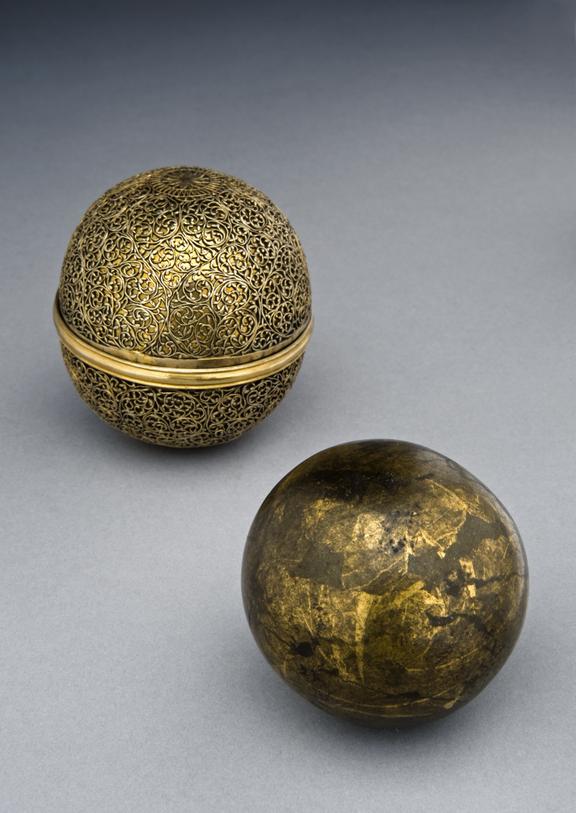


Spherical goa stone, used as a remedy for many diseases, bears traces of gold foil on outside, in elaborate silver gilt filigree case
Goa stones are named after their place of origin, Goa, in India. They are artificially manufactured versions of bezoar stones found in animal stomachs. Goa stones are made from a combination of clay, silt, shells, resin and musk and are typically spherical in shape like this one.
Scrapings from Goa stones mixed with water were drunk as a remedy for numerous ailments, including plague. They were also placed in drinks to counteract suspected poisoning. They were highly valued and could change hands for enormous prices. This stone has a case made from gold and silver threads interwoven to produce a highly ornate pattern.
Details
- Category:
- Ethnography and Folk Medicine
- Collection:
- Sir Henry Wellcome's Museum Collection
- Object Number:
- A66178
- Materials:
- case, gold and case, silver
- Measurements:
-
overall: 75 mm 70 mm, .36kg
stone: 60 mm, .23kg
- type:
- goa stone
- credit:
- Sotheby's




